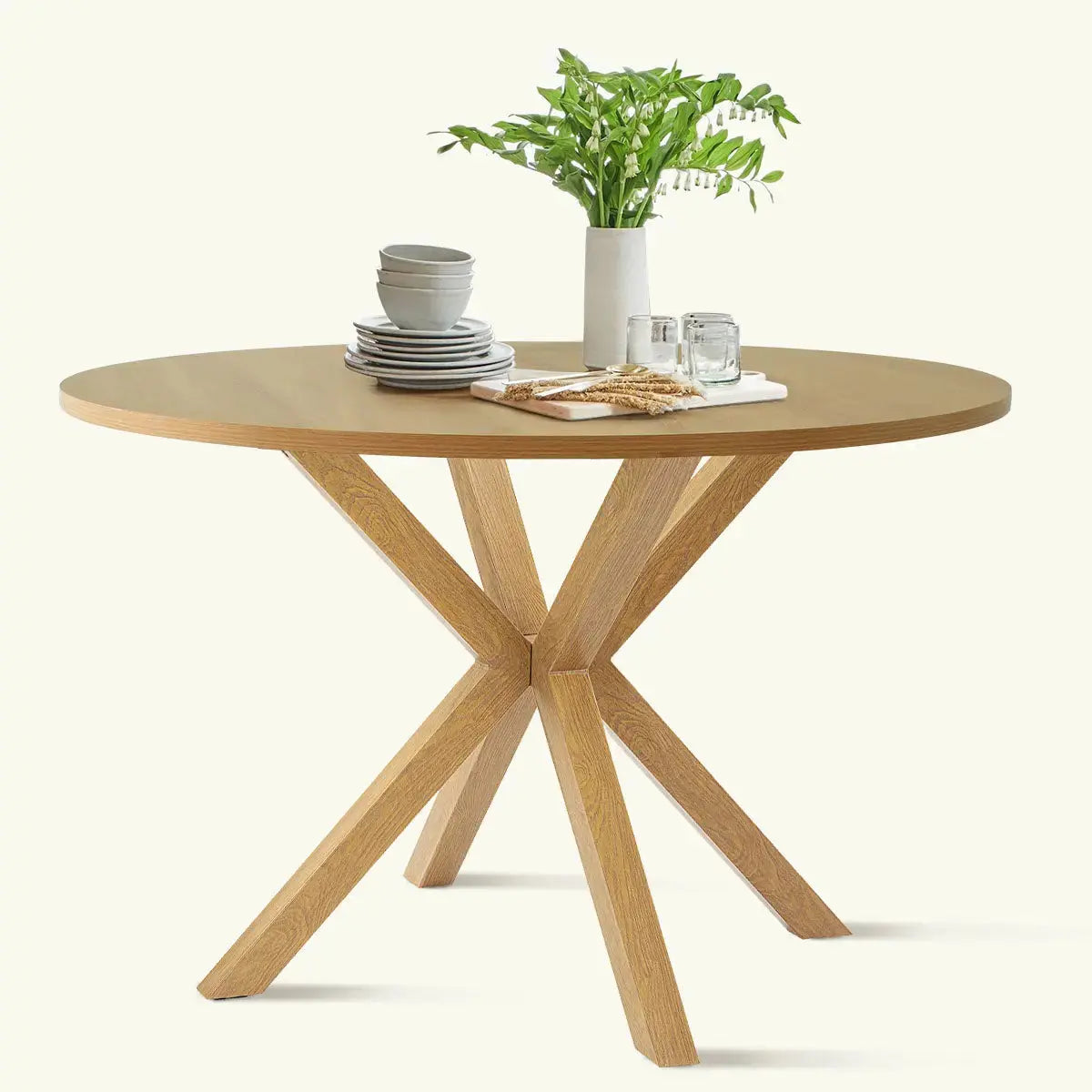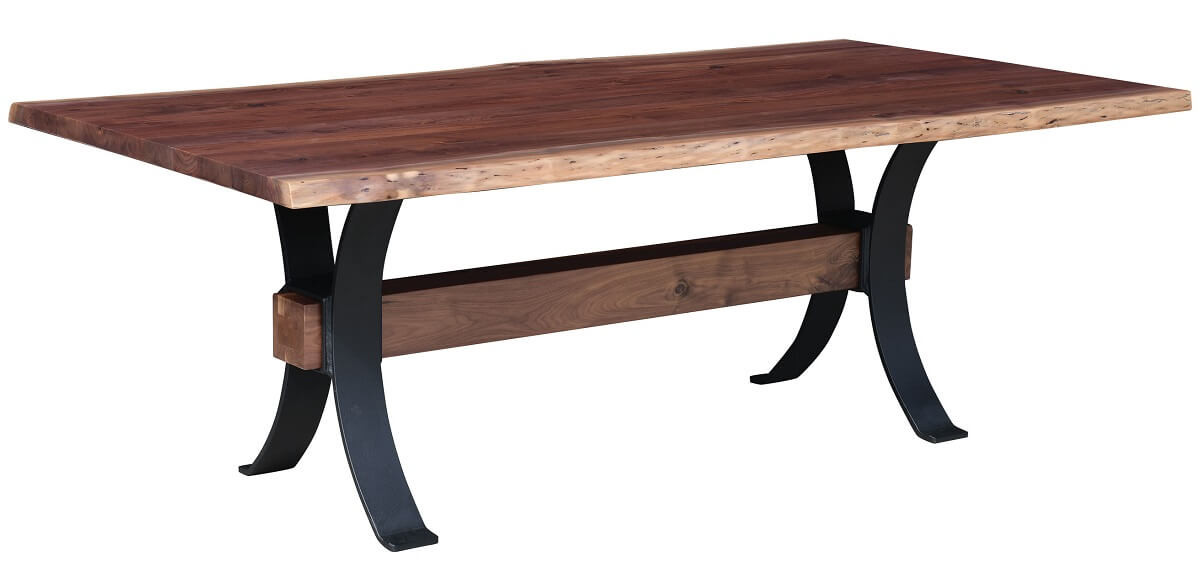The Impact of Dining Room Table Legs on Your Table's Overall Design
Wiki Article
From Typical to Modern: Locate the Perfect Dining-room Table Legs for Your Style
While traditional styles such as cabriole and transformed legs evoke a feeling of ageless refinement, contemporary designs like hairpin and geometric options present a chance for striking aesthetic interest. As you think about these components, the concern stays: just how can you flawlessly integrate these varied leg designs to produce an unified eating experience?Recognizing Table Leg Styles
The selection of eating space table leg styles can considerably affect both the appearances and functionality of the room. Each leg design adds special visual components and useful attributes, satisfying varied style choices and usage needs. Understanding these designs is crucial for picking the ideal table that lines up with your overall interior decoration vision.As an example, conical legs provide a tidy, traditional look that can boost a space's elegance, while stand bases provide security and make best use of legroom, making them suitable for smaller sized spaces. Hairpin legs, a characteristic of mid-century modern layout, introduce a commercial style, allowing for a ventilated, open feeling. In a similar way, trestle legs stimulate rustic beauty, offering durable assistance and a sense of timelessness.
Wooden legs can bring heat and appearance, whereas metal options typically share a smooth, contemporary ambiance. Inevitably, comprehending table leg styles is necessary for developing a natural eating area that shows individual design while ensuring practicality and comfort.
Standard Table Leg Options
When picking dining-room table legs, typical alternatives usually personify ageless style and workmanship. These layouts mirror a rich heritage and a dedication to quality, making them suitable for those that value timeless appearances.Among one of the most legendary typical leg designs is the cabriole leg, identified by its graceful curved shape. This design frequently features decorative carvings and is most frequently discovered in Queen Anne and Chippendale furniture. Another popular choice is the turned leg, which boasts a series of smooth, rounded shapes that give a timeless appearance while preserving stability.
Additionally, the straight leg, while straightforward, provides a basic and sturdy structure that can mix flawlessly with a selection of tabletop styles. For those attracted to ornate describing, claw-and-ball feet legs evoke a feeling of magnificence and can act as a spectacular prime focus in any kind of dining space.
Lastly, pedestal bases, although not purely legs, supply a different traditional option that permits enough legroom and can be magnificently sculpted. Each of these standard leg designs adds to the general ambiance of an eating space, weding function with visual charm.

Modern Table Leg Styles
Modern table leg layouts supply a varied variety of styles that emphasize innovative materials and clean lines. These designs typically focus on functionality while working as striking focal factors within a dining area. Minimalist appearances are widespread, with legs crafted from products such as metal, glass, and engineered timber, which add to a airy and contemporary feeling.One prominent design is the hairpin leg, characterized by its slim, conical framework that offers stability without overwhelming the tabletop (dining room table legs). This style is frequently located in mid-century modern-day furniture and can easily enhance different table forms. One more trend is making use of geometric forms, where legs might take on angular or asymmetrical forms, including aesthetic rate of interest and a touch of artistry

Blending Designs for One-of-a-kind Areas
Typically, homeowners look for to produce special eating rooms that reflect their personal design by blending numerous design elements. This method enables the unification of diverse aesthetic appeals, resulting in a harmonious yet distinctive environment. For instance, combining a rustic wood table with smooth, modern steel legs can develop an attractive comparison that raises the room's general appeal.In addition, integrating vintage table legs with modern tabletops can stimulate a feeling of background while keeping a contemporary perceptiveness. Such combinations not just showcase specific taste yet additionally motivate creativity, enabling home owners to curate an area that really feels both individual and inviting.
Shade plays an essential duty in this blending procedure; picking table legs that complement or comparison with the existing color design can improve visual interest. Whitewashed legs can soften the daring of a dark table surface area, producing a balanced visual.
Tips for Selecting the Right Legs
Picking the right table legs is important for attaining both functionality and visual allure in your dining space. Begin by a knockout post thinking about the overall design of your room. Typical setups gain from legs that include complex carvings or transformed designs, while contemporary areas get more might call for smooth, minimal designs.Following, analyze the height and security of the legs. dining room table legs. Basic eating tables vary in between 28 to 30 inches in height, so make sure the legs enhance this dimension for convenience. In addition, durable materials, such as hardwood or metal, can boost security and longevity
Examine the leg form as well-- alternatives include directly, tapered, or pedestal layouts. Straight legs provide a timeless appearance, while conical legs can include a touch of beauty. Pedestal bases give adequate legroom and are optimal for smaller rooms.
Final Thought
In summary, choosing the perfect dining-room table legs needs mindful factor to consider of both modern and typical styles. Standard choices such as cabriole and turned legs use timeless style, while contemporary layouts like barrette and geometric shapes offer a modern touch. By integrating leg style, height, and product with the general decoration, a cohesive and inviting atmosphere can be attained. Inevitably, the selected table legs ought to reflect the preferred visual, boosting the dining experience within the space.The range of eating area table leg designs can dramatically influence both the appearances and performance of the room. Inevitably, comprehending table leg designs is crucial for developing a natural eating area that mirrors personal design while guaranteeing practicality and comfort.One of the most famous conventional leg styles is the cabriole leg, characterized by its stylish rounded shape. Straight legs provide a timeless look, while conical legs can include a touch of beauty.In recap, picking the perfect eating room table legs needs mindful consideration of both contemporary and typical designs.
Report this wiki page